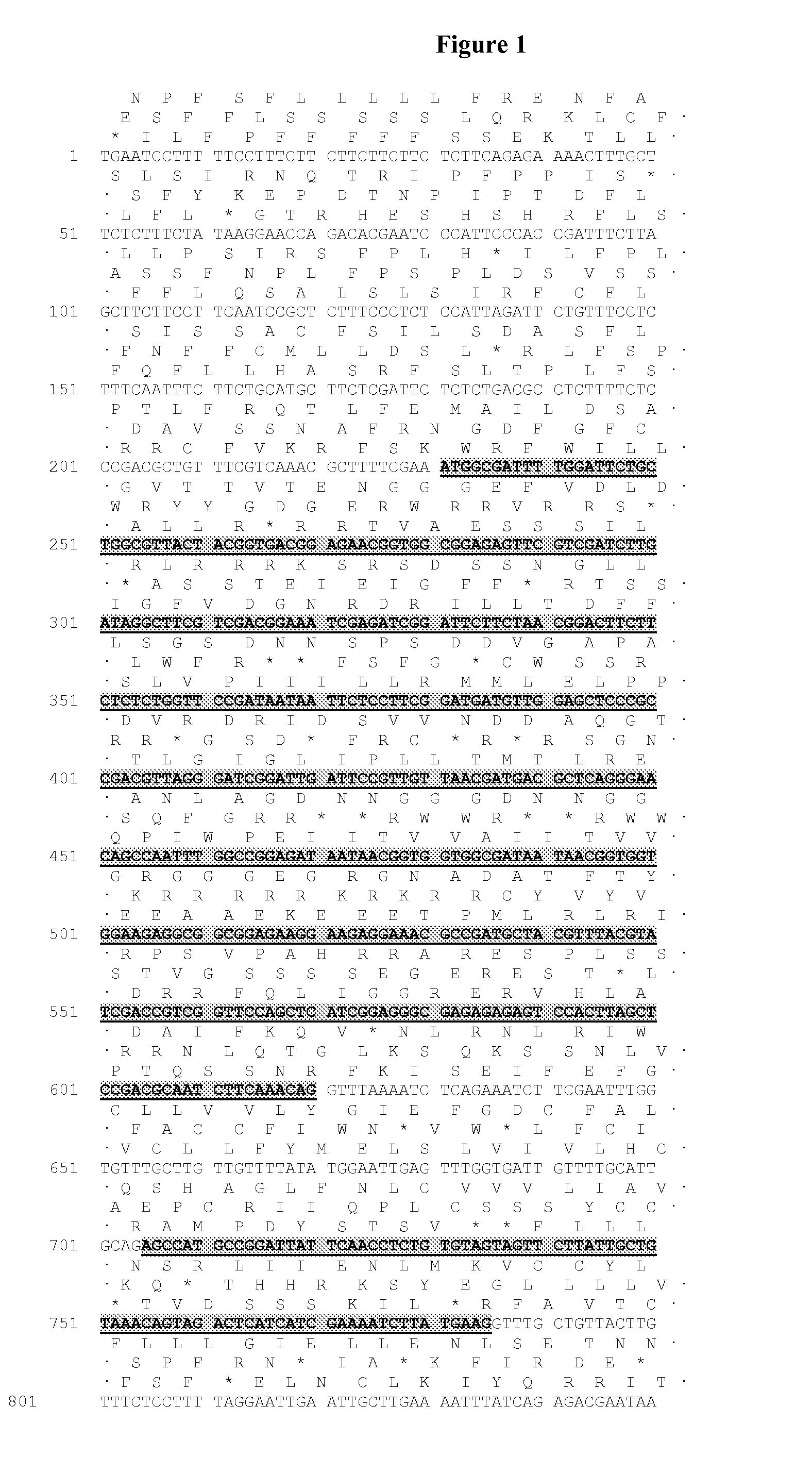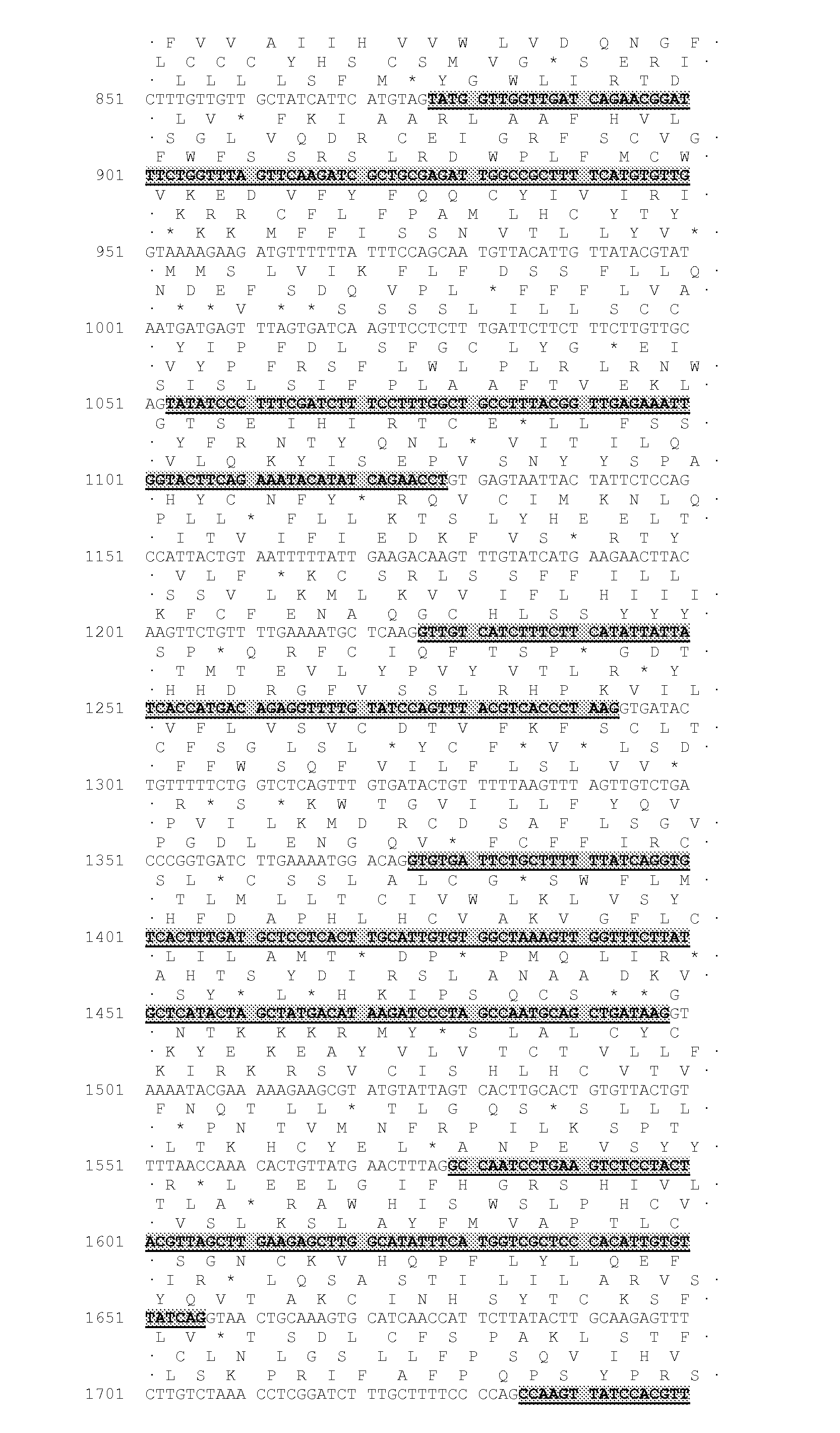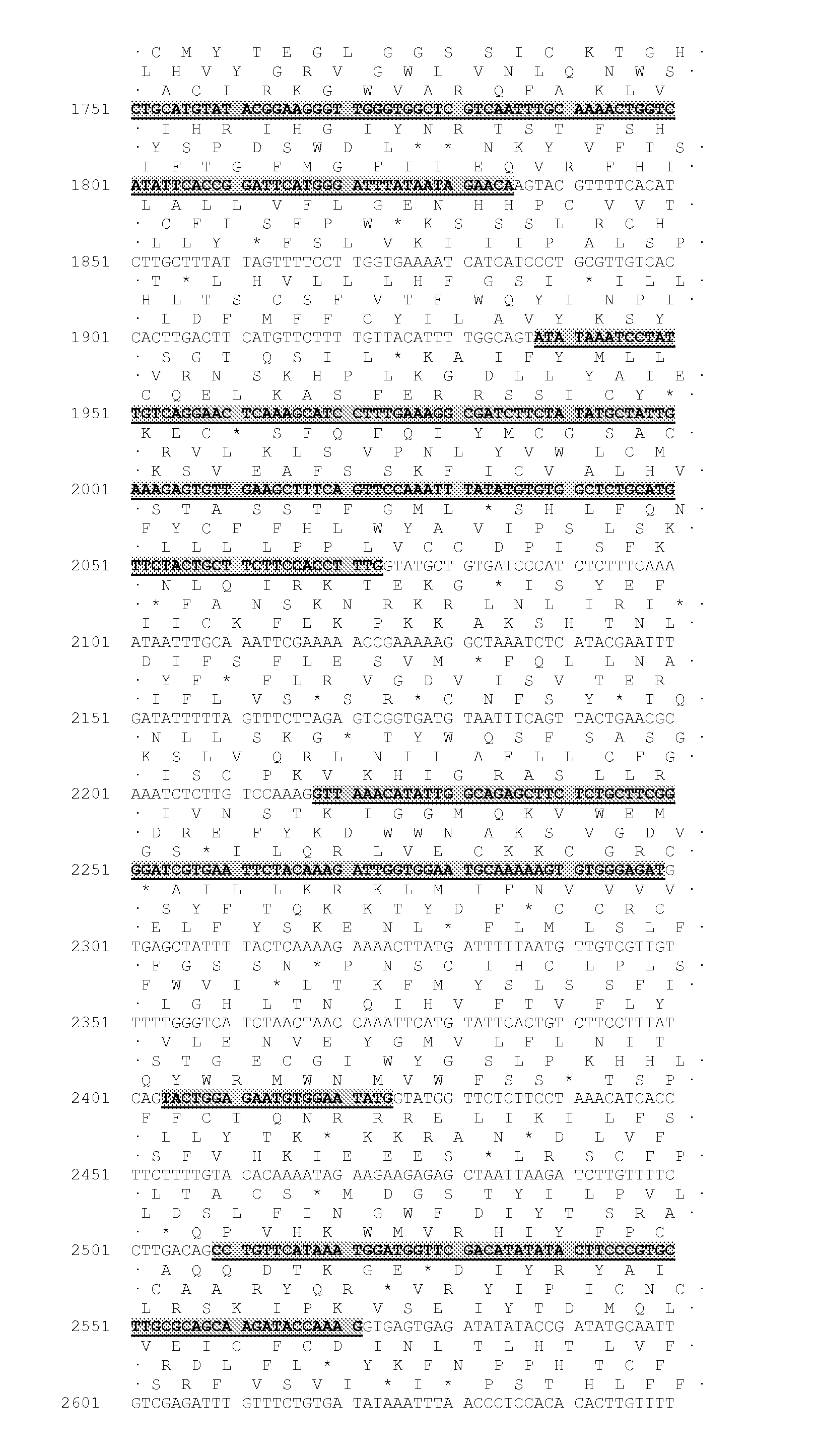Enhanced Acyltransferase Polynucleotides, Polypeptides and Methods of Use
a technology of acyltransferase and polynucleotides, applied in the direction of transferases, enzymology, organic chemistry, etc., can solve the problems of limiting success, affecting the yield and quality of triacylglycderides (tag) in eukaryotes, and previous attempts to improve dgat1 by biotechnological methods, etc., to achieve a wide range of effects, increase cellular lipid accumulation, and reduce protein accumulation
- Summary
- Abstract
- Description
- Claims
- Application Information
AI Technical Summary
Benefits of technology
Problems solved by technology
Method used
Image
Examples
example 1
Plant DGAT1 Sequence Selection and Splice Site Prediction
[0453]The majority of nucleic acid sequences and peptide sequences for the plant type 1 DGATs can be found by accession number in public domain libraries (Table 1). For creating initial alignments we used ClustalW (Thompson et al., 1994, Nucleic Acids Res., 22, 4673-4680); these were manually edited and used to create the models to search the DGAT sequences, using the HMMER2 package (HMMER 2.3.2 (October 2003) Copyright© 1992-2003 HHMI / Washington University School of Medicine, available from the World Wide Web at http: / / hmmer.org). Initial matching of protein sequences against genomic DNA with splice prediction was performed with the GeneWise package (Birney et al., 2004, Genome Res. 14: 988-995). Some of the sequences retrieved appeared to have errors; in particular incorrectly predicted splice sites which would result in internal deletions that would likely result in non-functional proteins. While both dicotyledonous and mon...
example 2
Modification of DGAT1 Proteins in the Region Upstream of the Acyl CoA Binding Site
[0454]FIG. 3 shows alignment of a number of DGAT1 sequences from plants. The left box shows the position of the Acyl-CoA binding site.
[0455]As a starting point for their experiments the applicants used the DGAT1 sequences of SEQ ID NO: 30, 34, 39, 41, 42 and 44 as summarized in the Table 2 below. These DGAT1s were modified by replacing the sequence 13 residues upstream of the beginning of the N-terminal acyl-CoA binding region (Weselake et al. 2006) with Met-Gly-Gly-Gly-Ser (MGGGS) (Table 2, Region 1 specific modifications / truncation constructs for expression in Saccharomyces cerevisiae). This meant their truncated N-termini were approximately 9 residues longer than the native N-terminus of the Selaginella moellendolffii native DGAT1 (SEQ ID NO: 46). Furthermore this placed the N-terminal truncations 18 residues upstream of the 84 amino acid truncation performed by McFie et al., (2010, JBC., 285:37377-...
example 3
Expression of Modified DGAT1 Sequences in Cells
[0457]Expression of Constructs in S. cerevisiae
[0458]The parent DGAT1 constructs and modified DGAT1 constructs were placed into the galactose-inducible yeast expression vector pYES2.1 / V5-His TOPO® (Invitrogen). This resulted in the addition of an inframe C-terminal V5 epitope and 6× histidine tag. The names of the modified constructs, and the number of their corresponding peptide sequences, are shown in Table 3.
[0459]The Saccharomyces cerevisiae quadruple mutant (H1246) in which all four neutral lipid biosynthesis genes have been disrupted (Sandager et al., 2002, The Journal of Biological Chemistry, 277:6478-6482) was transformed as per Elble (1992, BioTechniques 13, 18-20) and selected by the ability to grow in the absence of uracil. Routinely, yeast cells were grown aerobically overnight in a synthetic medium with 0.67% YNB, without uracil (SC-U) and containing 2% glucose. Cells from overnight culture were used to inoculate 200 mL of...
PUM
| Property | Measurement | Unit |
|---|---|---|
| stability | aaaaa | aaaaa |
| flexible | aaaaa | aaaaa |
| energy | aaaaa | aaaaa |
Abstract
Description
Claims
Application Information
 Login to View More
Login to View More - R&D
- Intellectual Property
- Life Sciences
- Materials
- Tech Scout
- Unparalleled Data Quality
- Higher Quality Content
- 60% Fewer Hallucinations
Browse by: Latest US Patents, China's latest patents, Technical Efficacy Thesaurus, Application Domain, Technology Topic, Popular Technical Reports.
© 2025 PatSnap. All rights reserved.Legal|Privacy policy|Modern Slavery Act Transparency Statement|Sitemap|About US| Contact US: help@patsnap.com



